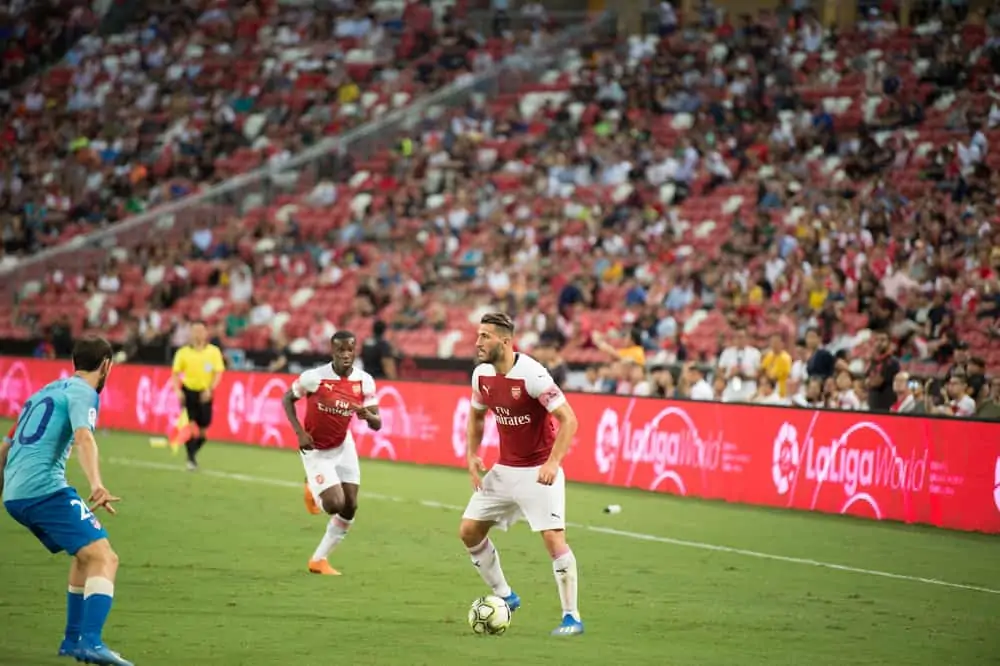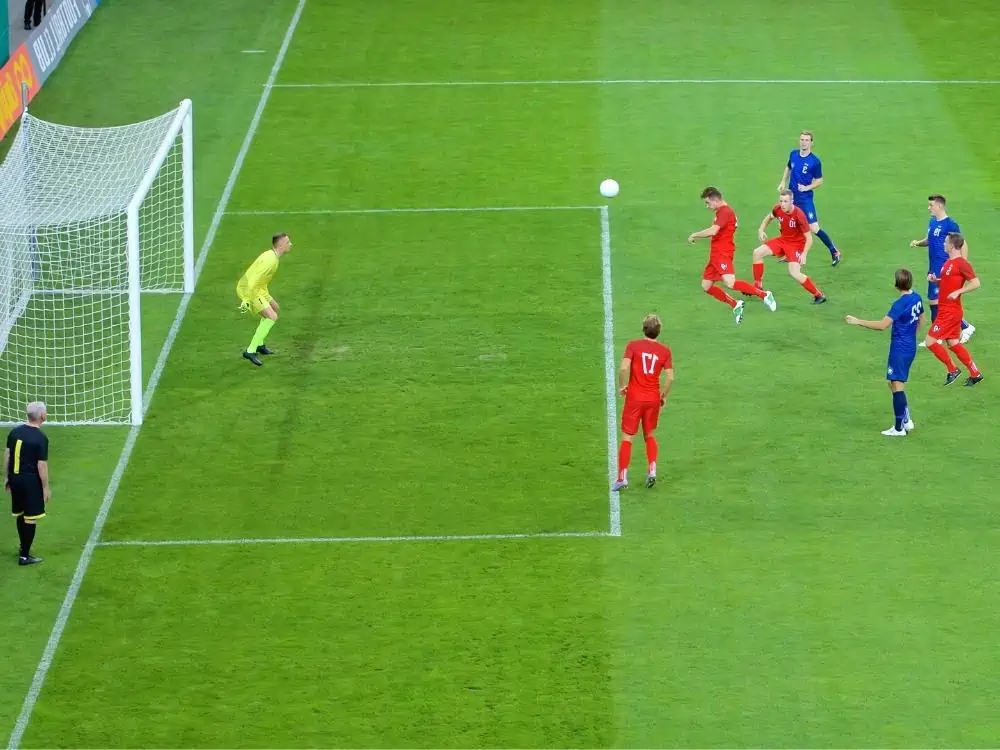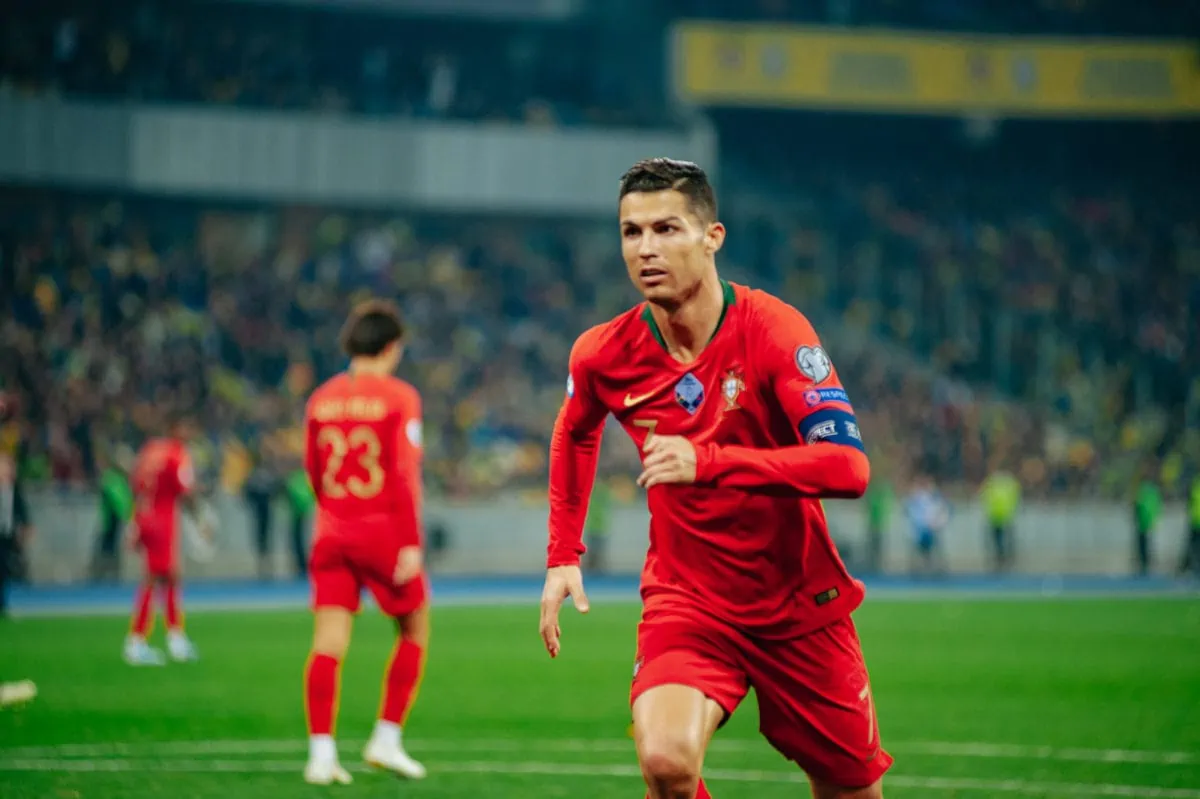Share the post "Moving Without the Ball (Off The Ball Movement)"
One of the most underrated skills in soccer is moving without the ball. You can even say that off-the-ball movement separates good players from great players – especially when it comes to attackers.
If you watch Messi play, you will see he’s constantly scanning the field. He keeps walking when he doesn’t have the ball and continuously looks to make space.
Messi also studies the movements of defenders and their tendencies. The little magician makes the opposing team think he isn’t in the game but creates space, and when he gets the ball, he is quick to react and score!
While you might not reach the same level as the world’s best player, you can practice moving without the ball to improve the game. So, are you ready to master the off-the-ball movement?
Here’s a glimpse of what this article entails.
- Various ways to move without the ball
- Receiving the ball
- Overlapping runs
- Tiki-Taka
- Deceiving your opponents
- Scanning your surroundings
- Communication with your teammates

- How to Move Without the Ball
- Go “Wide” when Receiving the Ball
- Make Overlapping Runs
- Try Underlapping
- Learn give-and-go Pass
- Timing is Essential
- Deceive your Opponent
- Use Your Body Wisely
- Scan your Surroundings
- Focus on Your Style of Receiving the Ball
- Communicate with Your Teammate
- Final Verdict - Movement
How to Move Without the Ball
The best thing to do when you don’t have the ball has thoroughly scanned the field for opposition players and their movements with the ball.
Your movement on the field will play a vital role in how much control your team has over the midfield.
You’ll have to make space for yourself, for your teammates and even intercept opposition passes when the other team has the ball. Here are some tips that will help you improve your off-the-ball movement.
Go “Wide” when Receiving the Ball
This is the ideal way for inexperienced players to maximize their effectiveness on the field.
When the ball is not moving toward you, the ideal thing to do would be to go “wide,” spreading the opposition’s defense and creating ample space in the middle for other players.
Make Overlapping Runs
Overlapping means going around or behind your teammate who has the ball. This method is undoubtedly one of the best ways to open yourself up for a pass because it easily confuses defenders.
This is especially true on the wings because it often creates a 2-on-1 situation, which means another defender might have to drift from their position. This creates space for your teammates.
Try Underlapping
Underlapping is very much like overlapping. However, the main difference is that you go front and across your team member instead of going from behind them.
The main goal of underlaps and overlaps is to confuse defenders, causing them to lose their marking. This ultimately creates space for your team to move forward.

Learn give-and-go Pass
A give-and-go is essentially taken from basketball, but it is also well-known in soccer. It means you pass and move to a different position or away from defenders to receive the next pass.
When there are rapid give-and-go passes, defenders tend to leave their positions to intercept the ball, thus creating space.
Barcelona players are famous for their give-and-go passes, more commonly known as Tiki-Taka.
They keep the ball and draw out opposition players with their quick passes. This creates space for their attackers to create goal-scoring opportunities.
Timing is Essential
Timing is obviously an essential aspect of soccer, but this doesn’t just refer to how you kick the ball or the timing of a pass or a cross.
If your teammate has the ball and you want it, don’t wait until it is off the root before making your run.
This is especially true if you’re trying to stay onside. Keep an eye on your teammate and make your runs accordingly.
Deceive your Opponent
You must know how to deceive your marker to gain a little extra time and space to receive the ball.
For this, it’s critical to time your run before your teammate is about to pass. The defender will struggle to catch up, and you will get the space to run with the ball.

Use Your Body Wisely
Always take a receiving position with your body facing inside the field. The goal is to modify your body position so that you can see your teammate passing the ball, the defender marking you, and any space you can run into when you receive the ball.
Suppose you get the ball facing the sideline or even your own net. In that case, you’ll encounter a variety of issues, including your marker constricting and pressing you into the line.
This shortens your playing area. Your only way out then is to push past or produce a bit of skill to get past, which isn’t always easy when playing against top-tier opposition.
Scan your Surroundings
To be a good player, you must be able to scan your surroundings on the fly. Soccer is a physical sport but also involves a lot of thinking. Knowing what’s going on around you is essential if you want to make the best judgment.
Information is also valuable since the more you have, the less time you’ll spend trying to figure out your next move.
Our recommendation is to examine it twice. Once when the ball is on its way to you and once before you make a move to deceive your opponent.

Focus on Your Style of Receiving the Ball
Soccer is full of intricate details, but the fundamentals are straightforward. You still need to score more goals than your opponent to win the game.
If you want to be a great player, you must have a strategy before receiving the ball, even if you decide later to try something different once you actually receive the ball.
If you’re trying to drag your marker and play fast with a running full-back, you’ll need a good first touch that gives you space to execute your next move. If you receive the ball and don’t have any space to move into, don’t force it and give up control.
This happens all the time. Instead, be calm and try to control the ball in the opposite direction of the defender’s approach.
This will allow you to use your body to prevent the defender from stealing the ball or clearing it out of play.
Communicate with Your Teammate
Ideally, you’ll only have a few seconds to communicate with your teammates. This is true whether or not you have the ball. Because you have to be quick on your feet (and in your mind), every bit of communication must be relevant.
This means giving them as much information as possible about the pass you want, when, and where you want it.
You can give them a shout to let them know that you want the pass. Something as simple as “NOW” is usually enough if you’ve practiced this routine before.
Use your hands to gesture to a specific location, such as your foot or into an open space. Use your body shape to indicate which foot you intend to use or which direction to travel.
Final Verdict – Movement
Soccer is a magnificent game, and it comes with quite a lot of pressure that only players and coaches can feel. It’s an incredibly physical game, but more than that, it requires patience, strategy, and a fair bit of mental gymnastics.
In a nutshell, if you want to be a great player, you must master your off-the-ball movement. It is just as essential as dribbling, passing, and shooting.
Once you’ve done that, you’ll be able to create more open spaces and get more chances to score.
Share the post "Moving Without the Ball (Off The Ball Movement)"
Joel is a seasoned soccer journalist and analyst with many years of experience in the field. Joel specializes in game analysis, player profiles, transfer news, and has a keen eye for the tactical nuances of the game. He played at various levels in the game and coached teams - he is happy to share his insight with you.



